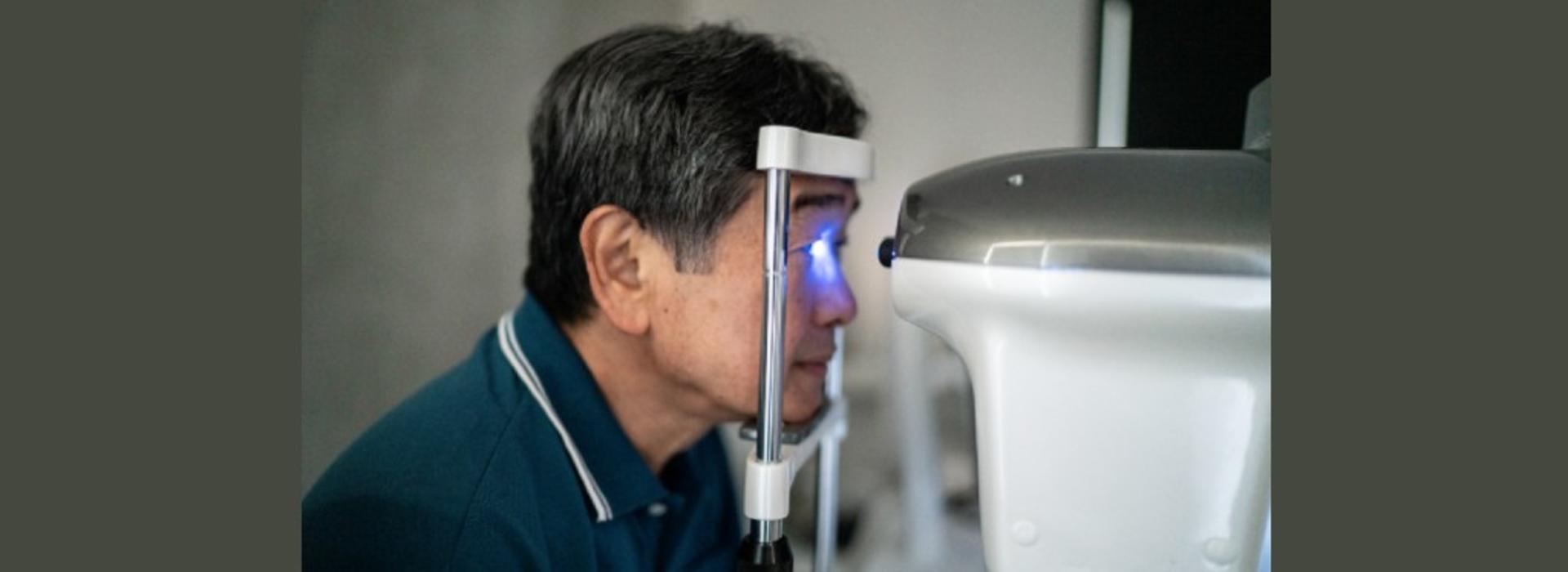
Talking glaucoma awareness with U of M
MINNEAPOLIS/ST. PAUL (1/09/2023) — Glaucoma is a leading cause of vision loss and blindness in the United States. Half of those with glaucoma, however, don’t know they have it.
For Glaucoma Awareness Month this January, Huda Sheheitli, MD with the University of Minnesota Medical School and M Health Fairview talks about the signs and risk factors of the condition.
Q: What is glaucoma?
Dr. Sheheitli: Glaucoma is a group of diseases that gradually cause permanent vision loss. Most of the time the vision loss occurs with no symptoms or warnings. The main two types of glaucoma are open-angle glaucoma and angle-closure glaucoma, both of which are marked by an increase in the pressure of the eye. Glaucoma occurs when intraocular pressure rises above normal levels to damage the optic nerve which is the cable that connects your eye to your brain. The optic nerve transmits images from the eye to the brain — similarly to a connecting electrical cable — except in this instance the wires are layers of nerves.
Q: Why is glaucoma called the ‘silent thief of sight’?
Dr. Sheheitli: By the time most patients are diagnosed with glaucoma, they are already suffering from irreversible vision damage. Once vision is lost due to damage to the optic nerve, the loss is permanent. Most of the time, gradual loss of vision occurs without the patient realizing due to the fact that most of the vision loss occurs in the peripheral vision before it affects the central vision.
Unfortunately, many forms of glaucoma are painless and do not have warning signs because of its gradual effect. In patients with acute angle closure and sudden severe elevation in intraocular pressure, patients may experience symptoms of eye pain, eye redness, sudden decline in vision, headache, nausea and vomiting. It’s important to continuously screen for this disease in order to diagnose patients early and deliver the appropriate treatment before irreversible vision loss happens.
Q: Who is at highest risk for glaucoma?
Dr. Sheheitli: Certain individuals are at higher risk for developing glaucoma, including:
- People over the age of 60;
- Family members of those already diagnosed with glaucoma;
- People of African American, Asian and Hispanic descent;
- Patients with diabetes;
- People who are severely nearsighted or farsighted.
Q: How is glaucoma treated?
Dr. Sheheitli: There are three different options for treating the glaucoma, all aimed at lowering the eye pressure. Medications — usually in the form of eye drops — or light energy laser treatment can help the outflow drainage system of the eye to work better. There are also different types of surgery that can be performed, either minimally invasive or a more traditional glaucoma surgery.
Q: What work are you doing to advance glaucoma research and/or treatment?
Dr. Sheheitli: Our team at the University of Minnesota Medical School is currently working on clinical studies that help improve the outcomes of glaucoma surgery and allow advances in the surgical field of adult and pediatric glaucoma.
Huda Sheheitli, MD, is an assistant professor with the U of M Medical School and an ophthalmologist with M Health Fairview. Dr. Sheheitli treats patients of all ages with glaucoma.
-30-
About “Talking...with U of M”
“Talking...with U of M” is a resource whereby University of Minnesota faculty answer questions on current and other topics of general interest. Feel free to republish this content. If you would like to schedule an interview with the faculty member or have topics you’d like the University of Minnesota to explore for future “Talking...with U of M,” please contact University Public Relations at unews@umn.edu.
About the University of Minnesota Medical School
The University of Minnesota Medical School is at the forefront of learning and discovery, transforming medical care and educating the next generation of physicians. Our graduates and faculty produce high-impact biomedical research and advance the practice of medicine. We acknowledge that the U of M Medical School, both the Twin Cities campus and Duluth campus, is located on traditional, ancestral and contemporary lands of the Dakota and the Ojibwe, and scores of other Indigenous people, and we affirm our commitment to tribal communities and their sovereignty as we seek to improve and strengthen our relations with tribal nations. For more information about the U of M Medical School, please visit med.umn.edu.